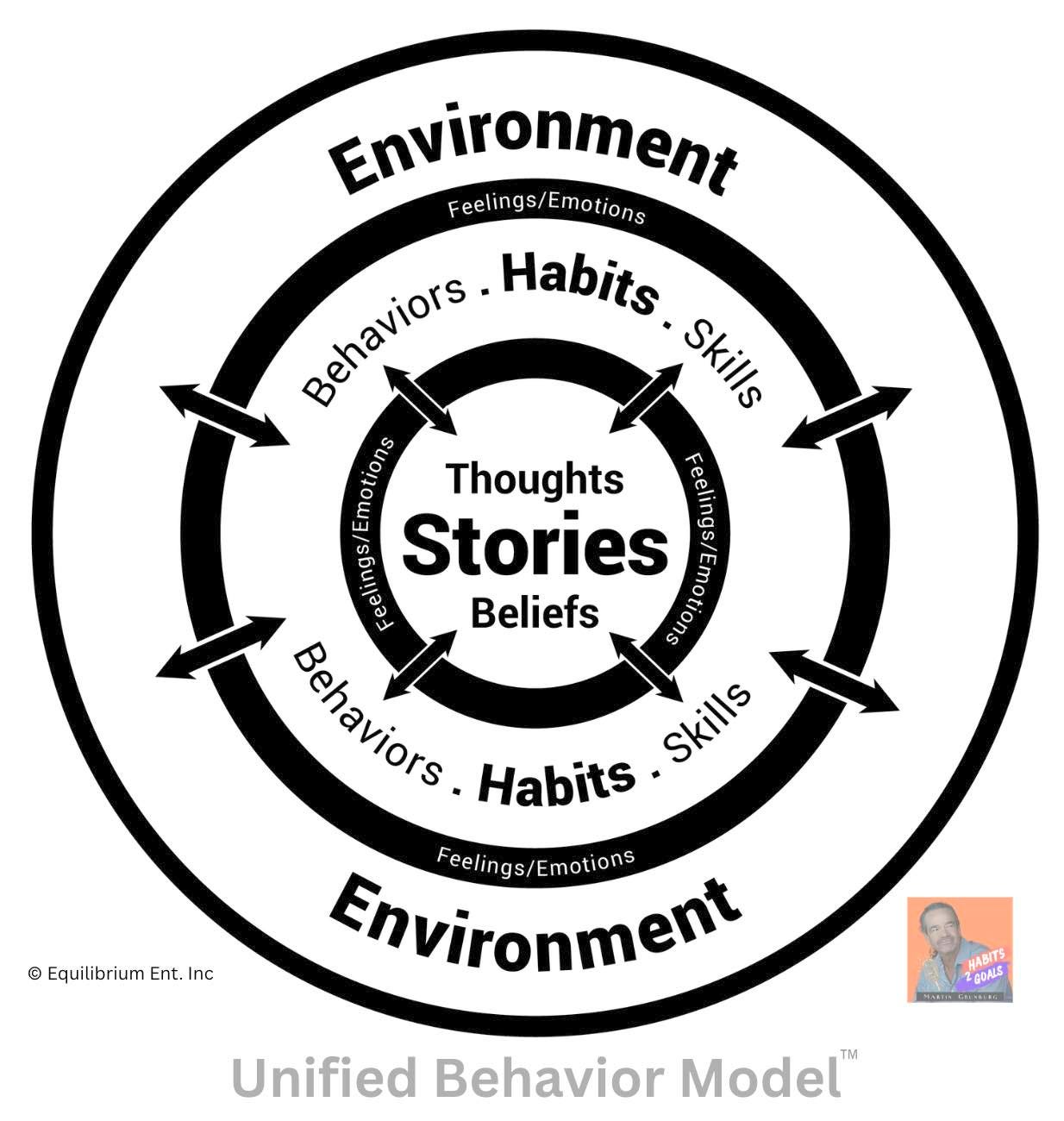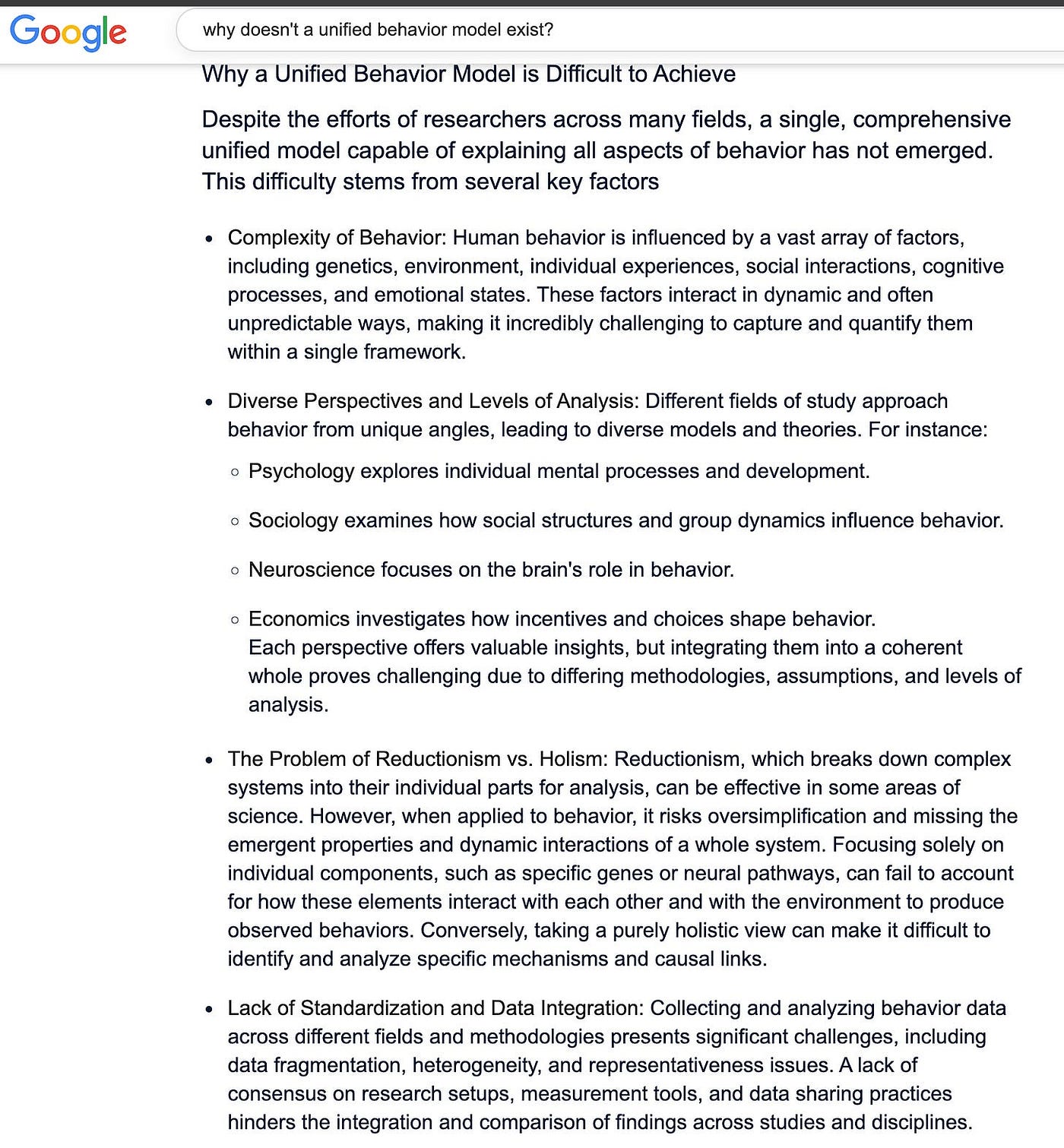Why paradox, poetry, and Picasso matter more than ever.
What is the sound of one hand clapping? — Zen Koan
Let’s begin with a semi-shocking revelation.
Developing the Unified Behavior Model™ (UBM) unexpectedly revealed a fascinating side quest: helping large language models (LLMs) navigate the tangled mess we humans lovingly call “logic” — which, when followed too faithfully, often leads straight to paradox.
You know — the deep, crunchy stuff:
- Body vs. environment
- Emotion vs. feeling
- Skill vs. habit
- Logic vs. illogic
These aren’t just philosophical speed bumps. They’re full-blown conceptual cul-de-sacs. Every time a system — human or machine — hits one, it either freezes or splinters into a dozen new directions.
“Today is the eighth day of the month; tomorrow is the thirteenth.”
THIS ☝️ is a perfect example of logic following its own rules — right off a cliff.
What Is Abstract Thought, Anyway?

Get it?
To “draw away”
It’s not about sounding smart or solving puzzles.
Frankly, it’s your one real edge over AI — for now.
It’s about seeing things and thinking differently, especially when the pieces don’t fit.
- It’s Picasso and Pollock pulling apart realism.
- It’s Einstein “riding a beam of light”.
- It’s Lao Tzu explaining how “The soft and the weak overcome the hard and the strong.”
Abstract thinking is cognitive flexibility — it’s a different lens to process, beyond logic.
It’s the ability to zoom out and remove the frame.
To hold both logic and contradiction in the same hand, without blowing a fuse.
When it came to a UNIFIED BEHAVIORAL MODEL™, we deliberately choose to go back to FUNDAMENTALS.
Not to simplify, but to clarify.
Not to dumb down, but to dissolve — to draw away from false binaries.
Because here’s the thing about dichotomies: Most aren’t real.
They’re often tradition wrapped in Latin, handed down like sacred scrolls, passed around in conference halls and research papers.
They survive not because they’re accurate, but because they’re familiar.
“If you can’t explain it simply, you don’t understand it well enough.” ~Einstein
And that’s how the Unified Behavioral Model™ emerged: Not from divine inspiration, rather, moderate exasperation.
Not from clarity, but from watching both brilliant humans and state-of-the-art LLMs get trapped in mental corners built by…
You guessed it: LOGIC.
Behaviorally speaking:
- Is the environment separate from the body?
Not Behaviorally speaking. BOTH are environmental and act as stimulus.
If a headache doesn’t change your mood and behavior, just like an idiot screaming at a baseball game, let me know. - Are emotions and feelings different?
Functionally perhaps? Not elementally. Both relay (conduct) information.
They’re conduits — connecting cognition (thought) and behaviors to our environment; akin to signals or waves that influence your Behavior Echo-System. - What about habits and skills?
Turns out, they’re far more alike than different. Both are shaped behaviors via repetition. Intentional or not, they’re forged over time. - Wait — how should we reconcile logic and illogic?
Reconcile? That’s precisely the point. The question assumes they’re separate. But even the most “logical” among us do wildly irrational things — because we’re driven by stories, by constructed meaning, not pure reason. Logic and illogic aren’t rivals.
They’re cognitive co-pilots — each essential to navigating the human experience..
If you want to teach an AI, LLM, or machine the system through which behavior emerges, you must first peel away the various dichotomies that logic — and much of behavioral science — have constructed.
And once those dissolve?
The behavior model doesn’t need to be built.
It simply… reveals itself.
Google: “Why doesn’t a unified behavior model exist?”
The answer begins with complexity.
Complexity arises from distinctions that are both important — and, at the same time, fundamentally (and elementally, behaviorally speaking) not so important.
Almost like jiggling an old TV antenna for the hundredth time, suddenly the picture locks in — clear as day, as though it was never scrambled at all.
Turns out, it — A UNIFIED BEHAVIOR MODEL — does exist. ☝️
It just had to be excavated from under layers of distinctions, logic, and dichotomies.
Logic, for better or worse, is linear.
Behavior — like the human experience — is abstract.
This is the beginning of behavioral literacy.
This is the Unified Behavioral Model™ (UBM)
We didn’t invent it — we excavated it.
It was buried. Deep.
This post originally appeared at Habits 2 Goals Premium by Martin Grunburg on Substack. To receive new posts and support my work, consider becoming a free or paid subscriber.

What was your face before your parents were born? — Zen Koan
While machines crunch data, HUMANS CONNECT DOTS.
Models can simulate logic, you can sit with uncertainty.
Again: “What is your face before your parents were born?”
When you envision a larger picture, frames dissolve.

Basic, elemental behavioral science should not be reserved for labs, universities, lectures and PhDs.
We teach adolescents the ABCs and 123s — elemental math and language skills. We can, and should, teach elemental behavior.
Perhaps, in a new AI-driven world, abstract thinking gets to come along for the ride.
“Experience and knowledge don’t arrive with labels, silos, or departments — those are created. Sometimes those distinctions are incredibly useful (like language itself). And sometimes — also like language — they bind us — make problem-solving harder than it needs to be.”
🚨 #TrueStory: Habit Tracking News Breakthrough!
Despite nearly a decade of dismissal from expert behavioral scientists and scholars, new science tells a different story .
READ for yourself what the Unified Behavior Model™ (UBM) White Paper reveals about the unmistakable power of the P.A.R.R. habit tracking methodology in SECTION 7.0.
Grab your free white paper (see Section 7.0) → Just a few weeks ‘old’ and nearly 500 downloads already, https://zenodo.org/records/15844153
Keep on trackin’ ✅
~mg
P.S. Reminder: The Unified Behavioral Model™ (UBM) is (allegedly ; ) the first behavioral model to be both UNIFIED and FALSIFIABLE — meeting the scientific gold standard of Ph.D.-level rigor.
Everyone (not just academics) is invited to download the paper and explore the “No Fifth Element” Challenge — with a $1,000 prize on the line.
Downloads? Nearly 500.
Entries? ZERO… Nada… None
This post originally appeared at Habits 2 Goals Premium by Martin Grunburg on Substack. To receive new posts and support my work, consider becoming a free or paid subscriber.
Grab your free white paper (see Section 7.0) → https://zenodo.org/records/15844153
📄 Grab the free habit tracking template: thehabitfactor.com/templates

